#John Sibbick
Text
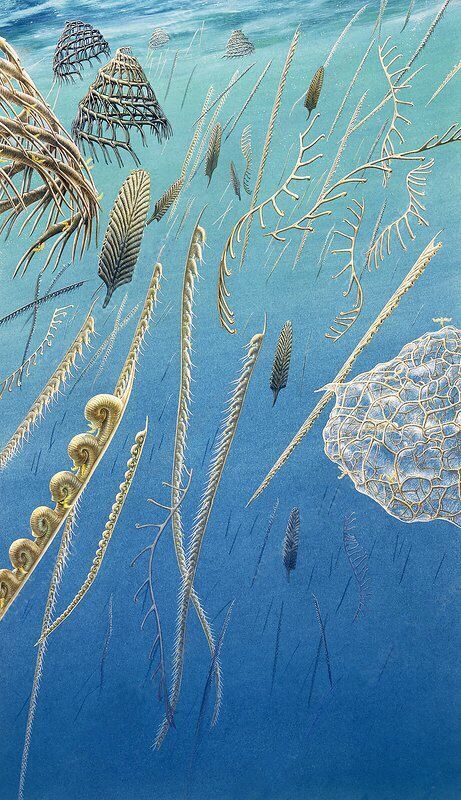
Graptolites in a Silurian sea, John Sibbick
These tiny geometries were nomadic cities, floating where the currents took them, so that their citizens might cull an entire sea, sweeping particles from the brine, leaving behind empty water, like rakes gathering mowed grass across a freshly cut lawn.
106 notes
·
View notes
Text
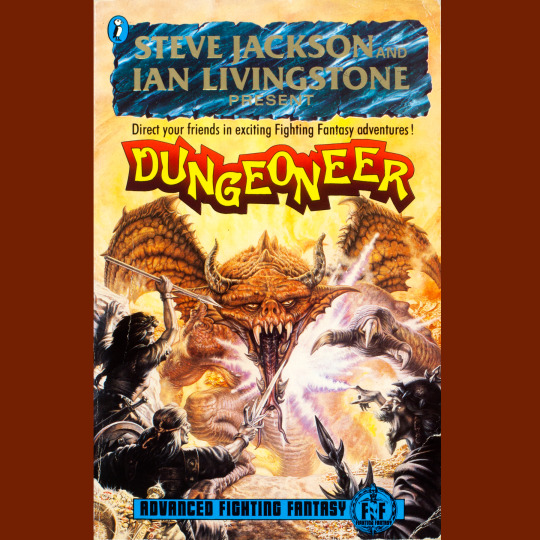
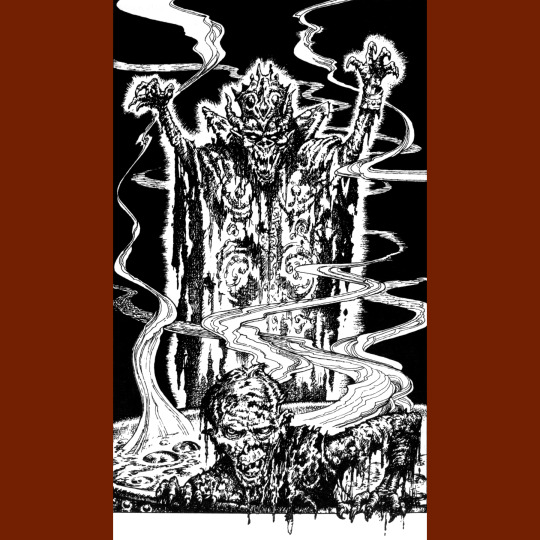
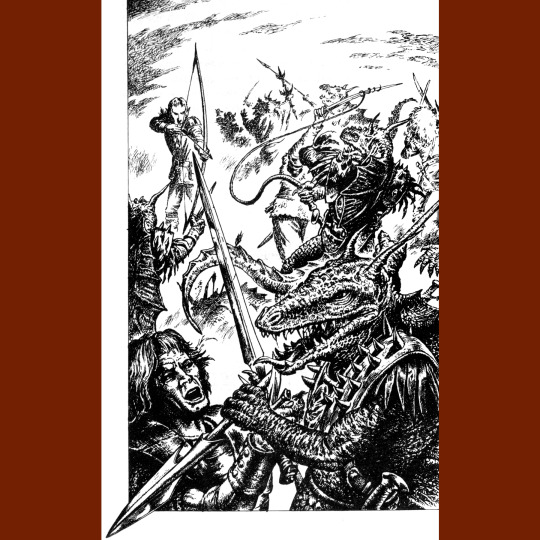
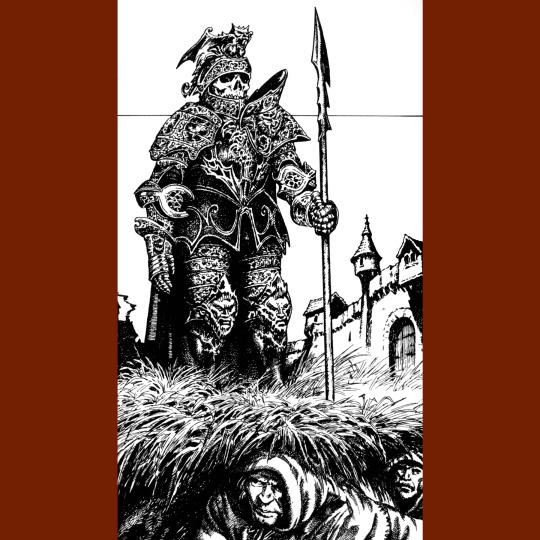
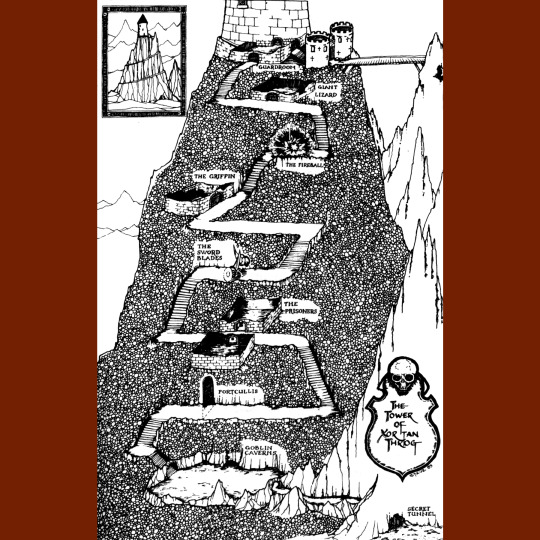
Ah, here we go now. This is Dungeoneer (1989) by Marc Gascoigne and Pete Tamlyn, with lovely art by the legendary John Sibbick on the cover and throughout the interior. Dungeoneer is the cornerstone of Advanced Fighting Fantasy which, despite the name (which really serves to distinguish from yesterday’s post and the Fighting Fantasy gamebooks rather than the game’s inherent complexity), is an excellent introductory RPG. It also provides the basic mechanical framework for the highly weird modern RPG, Troika.
So you get the standard three FF attributes: skill, stamina and luck. You get special skills, specializations basically, that augment regular skill rolls. You get a magic skill that runs on stamina (health) to cast spells with (love that) (I could swear there was an arcane misfire table in here too, but if there is, I can’t currently find it). You get opposed rolls for combat (combat against multiple foes is…tedious). The broad category of other stuff, like jumping and poison, that was sort of handwaved in the previous FF RPG are here, accompanied with robust situational modifier charts that…are probably a slight over correction. Oh, dwarves and elves are playable too. There is guidance for experience and advancement, character downtime and a nice general primer on how to run and play these sorts of games. It is pretty robust!
Oh, and two adventures, the first a pretty good if actually physically linear dungeon crawl and the second a more open-ended city scenario set in Port Blacksand. I like the city stuff in that one, but its dungeon bit is a little rough around the edges.
What is not at all rough is the treasure trove of John Sibbick art. A feast for your eyes!
#RPG#TTRPG#Tabletop RPG#roleplaying game#D&D#Dungeons & Dragons#Fighting Fantasy#john sibbick#Dungeoneer#Advanced Fighting Fantasy
116 notes
·
View notes
Text


John Sibbick from Timelife, "The Enchanted World Series": Tales of Terror, 1987
15 notes
·
View notes
Text
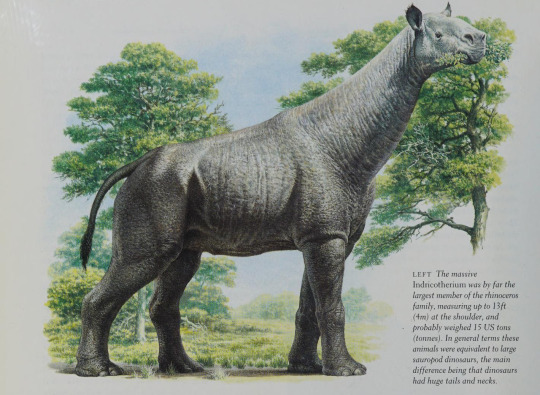
Prehistoric life : the rise of the vertebrates, David Norman, 1994. Illustrated by John Sibbick.
330 notes
·
View notes
Text
Gargantis
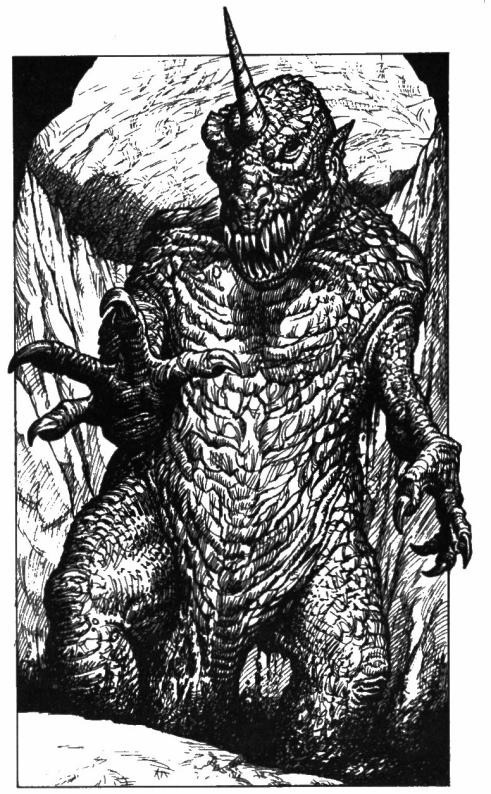
Image © John Sibbick
[Yes, that John Sibbick, most familiar to a generation of dinosaur nerds as the illustrator of David Norman’s Illustrated Encyclopedia of Dinosaurs, and one of the most ripped off paleoartists of all time. That distinctively wrinkled skin texture of Sibbick’s dinosaurs is present here in the gargantis, which has something of a kaiju vibe (specifically, it looks like Yongary). In Crypt of the Sorcerer, the original Fighting Fantasy book a gargantis appears in, a gargantis horn is the McGuffin you need in order to stake the titular sorcerer and kill him once and for all.]
Gargantis
CR 19 CN Magical Beast
This creature resembles an oversized dinosaur, with thick scaly skin and a long tail. It walks on two legs, its forelimbs being muscular and ending with clawed hands. It has multiple rows of teeth in its jaws, and a spiraling horn growing from between its eyes.
A gargantis is a powerful kaiju-like entity found deep within the lost worlds of the Darklands. They are not unique, as much as those that cross their paths would wish, but only under extreme circumstances are more than one found per continent. They feed primarily on flesh, but supplement this diet by feeding on magic, absorbed through their horn. Gargantises can see magical auras, and seek out powerful magic items to drain. This is likely to bring them into conflict with adventurers delving into their habitat.
Although the horn of a gargantis is its most feared weapon, its other weapons are still shatteringly powerful. Prey is grabbed in its jaws and swallowed, and smaller enemies are merely trampled. A gargantis can withstand large amounts of physical punishment, and is completely immune to mind influencing effects. When a gargantis is injured, it sends out a telepathic wave that makes creatures mindlessly violent, shattering the ability for a coordinated defense against their attacks.
Because of the antimagic properties of their horns, gargantises are sought out by the powerful and the desperate. A gargantis may be negotiated with, provided the negotiator can communicate in concepts simple enough (and offers a unique meal of magic and meat). If the gargantis cannot be convinced to cooperate in disjoining an artifact or slaying a powerful enemy, the horn can be claimed after the creature is slain. A gargantis’ horn can be used as an improvised Huge lance that overcomes all damage reduction; it is brittle and breaks on a natural roll of 1. It can use its magic negating properties by touch 1d4 times before crumbling into dust. The market value of a gargantis horn differs, but it is worth at least incidental treasure value for a CR 19 creature if sold on the open market.
Gargantis CR 19
XP 204,800
CN Colossal magical beast
Init +2; Senses arcane sight, darkvision 120 ft., Perception +16, scent
Defense
AC 33, touch 6, flat-footed 30 (-8 size, +2 Dex, +1 dodge, +27 natural)
hp 324 (24d10+192)
Fort +22, Ref +16, Will +15
DR 15/epic; Immune mind influencing effects; Resist acid 20, cold 20, electricity 20, fire 20, sonic 20; SR 30
Defensive Abilities reactive madness
Offense
Speed 50 ft.
Melee bite +31 (4d6+15/19-20 plus grab), 2 claws +31 (2d8+15), gore +31 (4d6+15), tail slap +29 (4d6+7)
Space 30 ft.; Reach 30 ft.
Special Attacks magical horn, swallow whole (AC 23, 32 hp, 4d6+22 bludgeoning), trample (Ref DC 37, 4d6+22)
Statistics
Str 41, Dex 15, Con 27, Int 4, Wis 20, Cha 18
Base Atk +24; CMB +47 (+51 grapple); CMD 58
Feats Acrobatic Steps, Blind-fight, Combat Reflexes, Critical Focus, Dodge, Improved Critical (bite), Iron Will, Multiattack, Nimble Moves, Power Attack, Staggering Critical, Stunning Critical
Skills Climb +26, Perception +16, Swim +26
Languages Undercommon (cannot speak)
Ecology
Environment underground
Organization solitary
Treasure special (see above)
Special Abilities
Arcane Sight (Su) A gargantis can detect magical auras and spellcasting ability as if it was under the effects of an arcane sight spell.
Magical Horn (Su) A gargantis’ gore attack overcomes all damage reduction, even epic or /-. As a standard action, or as part of a full attack action, a gargantis may touch a creature or object with its horn instead of making a gore attack. A creature or object so touched has its magic unraveled as per a mage’s disjunction spell (CL 19th, Will DC 26). The save DC is Charisma based.
Reactive Madness (Su) The first time in a 24 hour period that a gargantis takes damage, all creatures within 60 feet must succeed a DC 26 Will save or be overcome by random violence for 2 minutes. On the start of an effected creature’s turn, it has a 50% chance to attack the nearest conscious creature to the best of its ability for 1 round instead of taking its normal action. This is a mind influencing, compulsion effect and the save DC is Charisma based.
55 notes
·
View notes
Text

An Early Cretaceous scene by John Sibbick 🦖
41 notes
·
View notes
Text
National Fossil: South Africa
Welcome back to my silly little paleontology poll about which fossils should represent each country. This time we're focusing on the African continent and right now on South Africa.
You know the drill: As always, it could be a fossil that is just exceptionally well preserved and beautiful, had a huge impact on paleontology and our knowledge of the past, is very common/representative of the area, is beloved and famous in the public eye, is just a very unique and interesting find, or has any other justification.
So here are our contestants:

Australopithecus africanus (Taung Child): As we‘re moving into Africa it should come to the surprise of absolutely nobody that the continent is covered in fossils telling us about our own human evolutionary history. The Taung Child, the skull of a young Australopithecus, was discovered in 1924, and as the first early hominin ever found, it sparked lots of controversy in the scientific community, as this was long before we had a good understand of the “ape-to-human“-transition: It took decades for Australopithecus to become fully accepted as an “early human“, but since then it has become one of the most important paleontological finds ever.
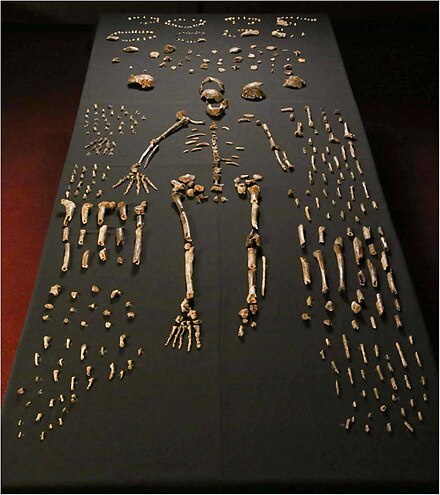
Homo naledi: A much more recent find is Homo naledi, discovered 2013 in a cave system. Even though the bones of at least 15 individuals have been found, these cousins of ours are still quite mysterious, as they show some archaic characteristics that seem out of place for how young the fossils are and more research needs to be done.


Lystrosaurus (Art by John Sibbick): Oh look, it‘s everyone‘s favorite mass extinction survivor! The small to medium-sized dicynodont (an early cousin of what would become the mammal line) made it through the Permian mass extinction, aka The Great Dying, seemingly unharmed - on the contrary: In the early Triassic they were so numerous that in some South African fossil sites more than 90% of all found material are Lystrosaurus!

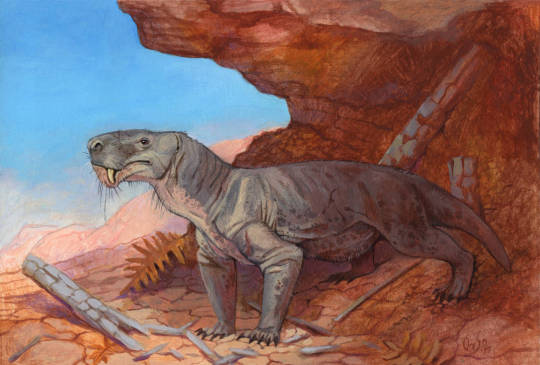
Inostrancevia (Art by OrsoMoretti): Someone who didn‘t made it through The Great Dying was Inostrancevia, but that doesn‘t make the 3 m long gorgonopsid (another “not-quite-a-mammal-yet“) any less impressive. Its most striking identifier were the 15 cm long sabertooth-canines. In that sense, gorgonopsids like Inostrancevia did their impression of sabertooth-cats over 200 million years before cats even became a thing.
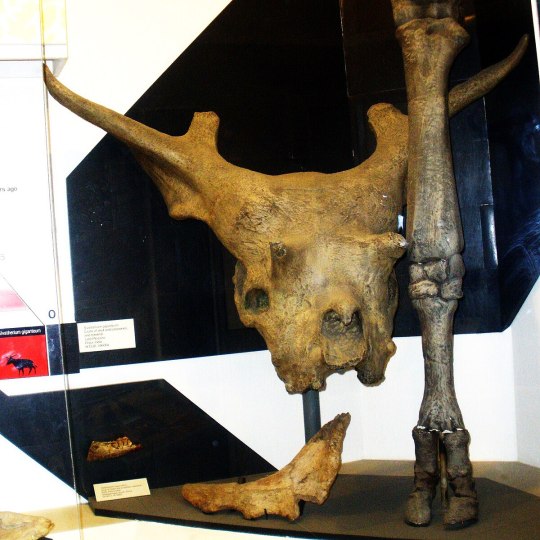

Sivatherium (Art by Jaime Chirinos): If you’d rather choose something that feels a bit more like a typical african animal, maybe just as a slightly more ancient version - South Africa of course doesn‘t disappoint here either: Sivatherium, a short-necked giraffe might hold a good balance between something that is recognizable enough to our modern eyes, yet strange and unusual enough to be a unique and interesting pick.
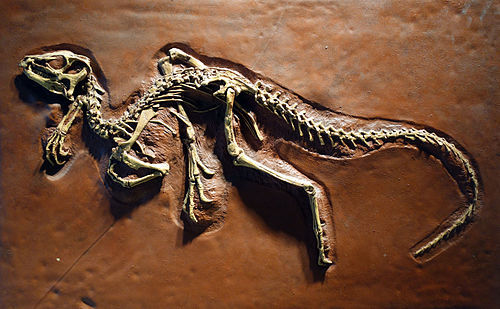

Heterodontosaurus (Art by Gregory S. Paul): Lastly, if you want to pick a dinosaur, South Africa provides you with some good finds on early dinosaurs: Heterodontosaurus lived during the early Jurassic and was a very basal member of the ornithischians, the same group that would later include such famous figures as Triceratops, Stegosaurus or Parasaurolophus. Apart from generally giving scientist a hard time placing it on the familiy tree, the small dinosaur is mostly known for its strangely shaped teeth, from which it got its name.
#paleontology#fossils#paleoblr#south africa#australopithecus#lystrosaurus#synapsid#inostrancevia#sivatherium#heterodontosaurus
2 notes
·
View notes
Text
2022 Reading Log pt. 16

76. Nine Nasty Words by John McWhorter. This was picked up based on the author—McWhorter wrote Our Magnificent Bastard Tongue, which is a very good overview of the development of English from the pieces and parts of other languages. The subject is profanity in English, covering some of the most common words, tracing their origins and uses, and highlighting how they shift and become abstracted over time. Fuck is the most famous of these, which is notoriously capable of being verb, noun, adjective and interjection all at once, but other swear words have achieved similar flexibility. The book also discusses slurs, which as the author points out are seen as much more obscene and offensive these days than former heavy hitters like damn and shit. My personal favorite bits include how “cocksucker” was replaced with “asshole” as a term of abuse, the unwritten rules for using profanity as an infix (e.g. why it’s “abso-fucking-lutely” and not “ab-fucking-solutely”), and the real, honest-to-god historical Englishman named Simon Fuckbutter.

77. Atoms and Ashes by Serhiii Ploky. The topic of this book is nuclear disasters, four of which I was familiar with, two of which I had never heard of. In order, the ones I’d heard of were Castle Bravo (in which miscalculated explosive power and not enough regard for the weather led to hundreds of people coated in radioactive ash), Three Mile Island, Chernobyl and Fukushima. I was unaware previously of were the Kyshtym disaster, in which a storage tank in a plutonium manufacturing plant in the Ural Mountains exploded, and the fire of the Windscale power plant in England. The book is gripping, with a good amount of detail both technical and personal, but not so much that the reader gets lost in the weeds. My one complaint is that, although it discusses the movie The China Syndrome, the book doesn’t actually talk about what that title refers to (a nuclear meltdown sinking into the Earth’s crust) until it’s referred to the fear of it happening multiple times. But that’s a minor quibble.
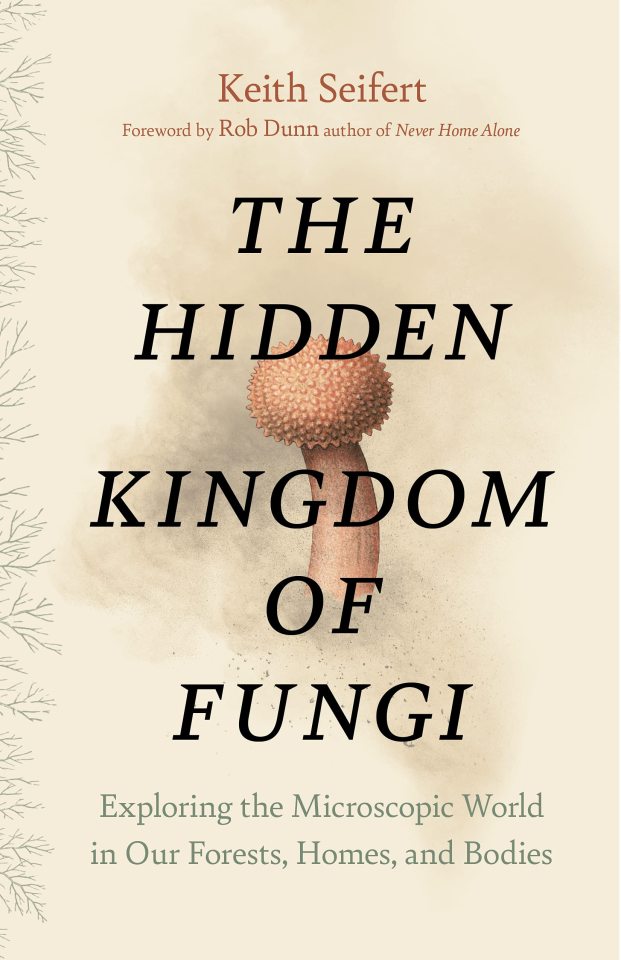
78. The Hidden Kingdom of Fungi by Keith Seifert. There has been a huge bloom of books about fungi written for general audiences in the last couple of years. This is the best of them, partially because it focuses on symbioses between fungi and other organisms and because it doesn’t turn into a sermon about the wonders of psychedelics halfway through (I’m looking at you, Merlin Sheldrake). This book does a very good job of discussing how symbiosis exists on a continuum, and how the relationship between two organisms may go from mutualistic to commensal to parasitic over time, based on environmental conditions and other organisms influencing the interaction. It also has a glossary of scientific names in the back organized by phylogenetic groups, which the phylogeneticist in me greatly appreciated.
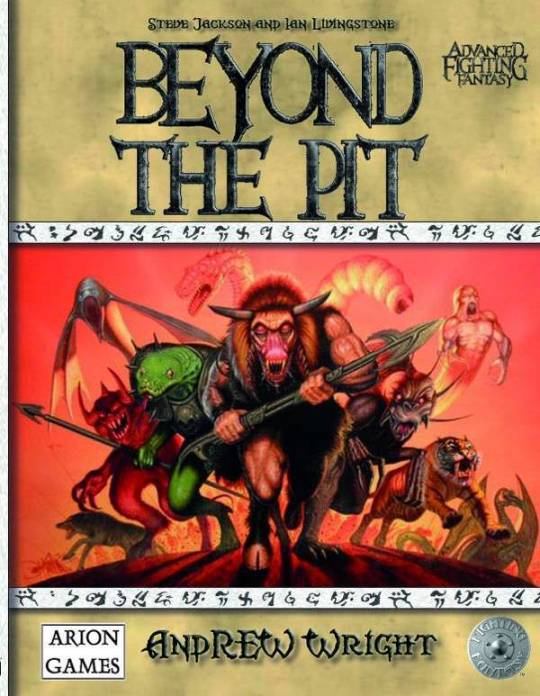
79. Advanced Fighting Fantasy: Beyond the Pit, edited by Andrew Wright. The second Fighting Fantasy related monster book never existed for the original Fighting Fantasy game, but is a compilation of monsters from Fighting Fantasy titles that either didn’t make it into Out of the Pit or were published afterwards. I’d say that this is an improvement over the first volume in every way. There’s less racism, less instant-kill monsters, and each monster is identified with its original author, source and illustrator. Which is how I learned that John Sibbick, who did the art for 1985’s Encyclopedia of Dinosaurs and is one of the most influential (read, ripped off) paleoartists of the late 20th century, did some illustrations for Fighting Fantasy!
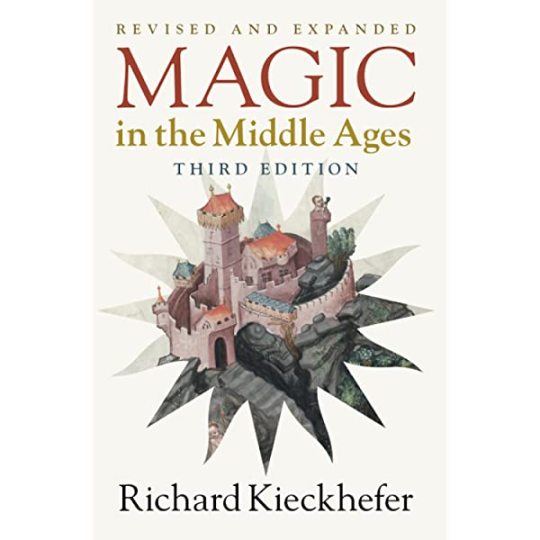
80. Magic in the Middle Ages, Third Edition by Richard Kieckhefer. This is a very good book about the title topic; highly recommended for people who are interested in the topic specifically or in the occult in general. It divides magic up based on how people of the time tended to frame it, as “natural” magic (relying on inherent, God-given properties of stones, herbs, words, etc.) and “demonic” magic (self-explanatory). Which leads to some issues because not all practitioners divided things up that rigidly, as this edition discusses newly for the first time. Apparently, the earlier editions did not discuss things like angel summoning magic. The reproductions are of interesting material, but are a little difficult to parse, because they are in black and white in relatively low resolution. Having a glossy figures section in the middle would make this book look better, but again, a minor complaint for the quality of the book as a whole.
9 notes
·
View notes
Text
Rangers began one of the biggest weeks in their history with a youthful XI easing to victory over Hearts in the Scottish Premiership at Tynecastle.
Hearts led through Peter Haring's strike, seven days before the two sides meet again in the Scottish Cup final.
But Rangers, who take on Eintracht Frankfurt on Wednesday in the Europa League final in Seville, fought back through Cedric Itten and Alex Lowry.
And 19-year-old Cole McKinnon scored from the bench on his debut.
"We dominated against a very good side with a very young team," said Rangers manager Giovanni van Bronckhorst. "I'm very proud."
Hearts end the league season with just one point from four games, but what will concern manager Robbie Neilson is that forward Liam Boyce lasted just 12 minutes before hobbling off injured.
However defenders John Souttar and Craig Halkett both made late appearances after lengthy injury lay-offs ahead of the trip to Hampden.
Reaction & how it happened
Billed as a cup final rehearsal, both managers made 15 changes between them from midweek, with Rangers naming a bench that had an average age of 20.
The likelihood is the sides that walk out in Seville and Hampden next week will be much different from the ones that emerged from the Tynecastle tunnel, but there was no lack of tempo as Scott Arfield twice threatened to give the visitors an early lead.
It remained lively. Steven Davis shot wide for Rangers, while at the other end goalkeeper Jon McLaughlin had to race out and slide tackle Gary Mackay-Steven, who had broken through the visitors' backline.
Ellis Simms was the main cause of angst for the Rangers defence, and the forward was pivotal as Hearts took the lead.
The on-loan Everton man latched onto Josh Ginnelly's pass, held it up, then laid the ball off to Haring who cracked a laser from the edge of the box and into the bottom left-hand corner.
But the lead was short lived. Itten had a low shot deflected over the bar, but raced to the front post to meet the corner and headed in his first league goal of the season.
Rangers were always a threat on the counter attack. Amad Diallo shot over the bar after a neat one-two with Aaron Ramsey, before Lowry scored his first league goal for Rangers.
The 18-year-old collected the ball out wide on the left and planted a classy finish beyond Gordon.
As Barrie McKay livened up so did Hearts, and he had two good chances in a minute. First he juggled the ball then flashed a left-foot shot just over the bar, before racing onto a cut-back and firing just wide of a post.
McKay shot over again after Nathan Atkinson elected to pass rather than shoot, but then Rangers' youngsters took over to show the future is bright in Govan.
Charlie McCann looked like he would burst the net, only to pull his shot wide. Then Cole McKinnon - 20 minutes after coming on for his debut - lashed in a fine finish from the edge of the box to make it three.
Tony Weston then headed wide at the back post as Hearts were opened up again.
Hearts did have the last chance when McLaughlin pushed wide a Toby Sibbick shot, but Neilson's side will need much better when it really matters in seven days time.
Man of the match - Alex Lowry
Alex Lowry (right) had a goal, an assist, and looked a real prospect for Rangers
The playmaker (right) had a goal, an assist, and looks a real prospect for Rangers
What did we learn?
Both managers would have wanted to get through the 90 minutes without injuries to key players. Neilson is beginning to get many of his players back fit and now has options ahead of the Hampden showpiece.
Boyce's injury will be a worry, but replacement Ginnelly was one of the hosts' better players and may well have played himself into the cup final starting XI. Haring, McKay and Simms have all surely done enough to start the final, too.
It may well be a case that no players who started for Rangers will start in Seville, but in Lowry they have a player who could be a big part of the team over the next few seasons.
The classy 18-year-old delivered a goal and an assist in the first half, and looked comfortable on the ball every time it arrived at his feet.
What did they say?
Hearts manager Robbie Neilson: "I just thought we weren't at it; it had that end of season feel. But we've had a brilliant season so far.
"I could see a bit of rustiness in some of the players that came back too. It's about next week now. We've got to bring the energy that we didn't bring today."
Rangers manager Giovanni van Bronckhorst: "I was really impressed by the win and the way we played.
WYou couldn't see the changes we had made, especially with so many youngsters on the pitch. They performed really well."
What's next?
The two sides face each other again at Hampden next Saturday in the Scottish Cup final (15:00 BST), but before that Rangers take on Eintracht Frankfurt in Seville on Wednesday in the Europa League final (20:00).
0 notes
Text
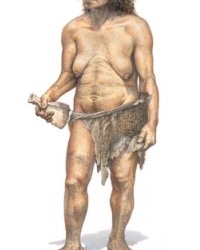
female Neanderthal by John Sibbick
#could have been me#but I need some more muscles#need to lift some more heavy stones and logs#neanderthal#neanderthal woman#john sibbick#paleoart#cave woman
96 notes
·
View notes
Photo
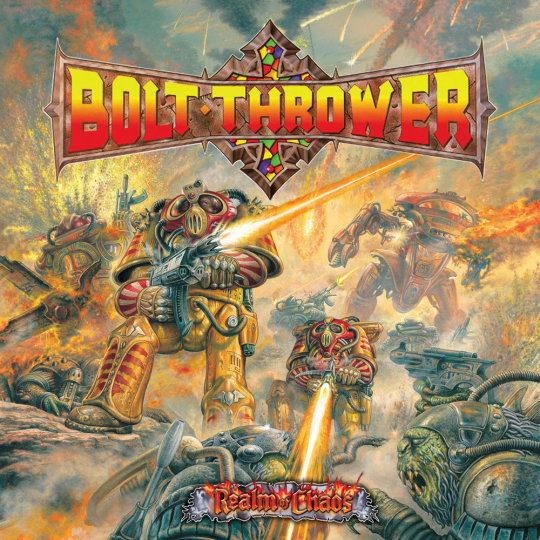
Bolt Thrower | Realm of Chaos (1989)
93 notes
·
View notes
Photo

White Dwarf (John Sibbick, Warhammer Fantasy Battle 3rd ed, Games Workshop, 1987)
#Warhammer#John Sibbick#dwarf#the white dwarf#Grombrindal#white dwarf#WHFB#fantasy art#Warhammer Fantasy#Warhammer Fantasy Battle#WHFB 3e#beard#battleaxe#axe#1980s#Games Workshop#GW
606 notes
·
View notes
Photo

Fighting Fantasy? That's for babies. This week on the Vintage RPG Podcast, we look at Advanced Fighting Fantasy, the full-fledged RPG rules derived from the (not really for babies) Fighting Fantasy gamebook series. There are three delightful volumes - Dungeoneer starts things off with dungeons rules, Blacksand! takes players to the city streets and Allansia explores the great outdoors. Lots of fantastic art by John Sibbick and Russ Nicholson, plus a lightweight and versatile system with a surprising modern legacy!
#RPG#TTRPG#Tabletop RPG#Roleplaying Game#D&D#dungeons & dragons#Podcast#Fighting Fantasy#Advanced Fighting Fantasy#John Sibbick#Russ Nicholson#Dungeoneer#Blacksand#Allansia
46 notes
·
View notes
Photo

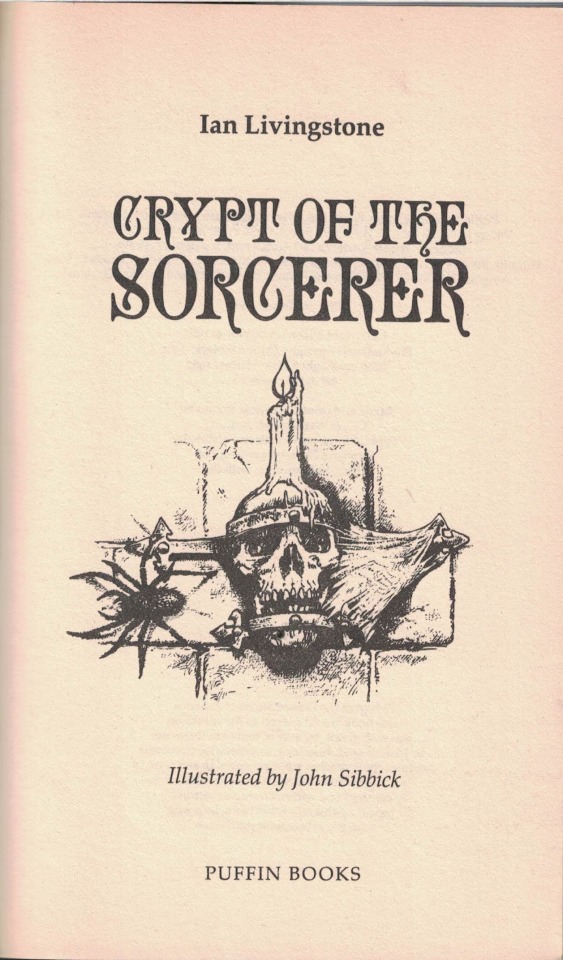
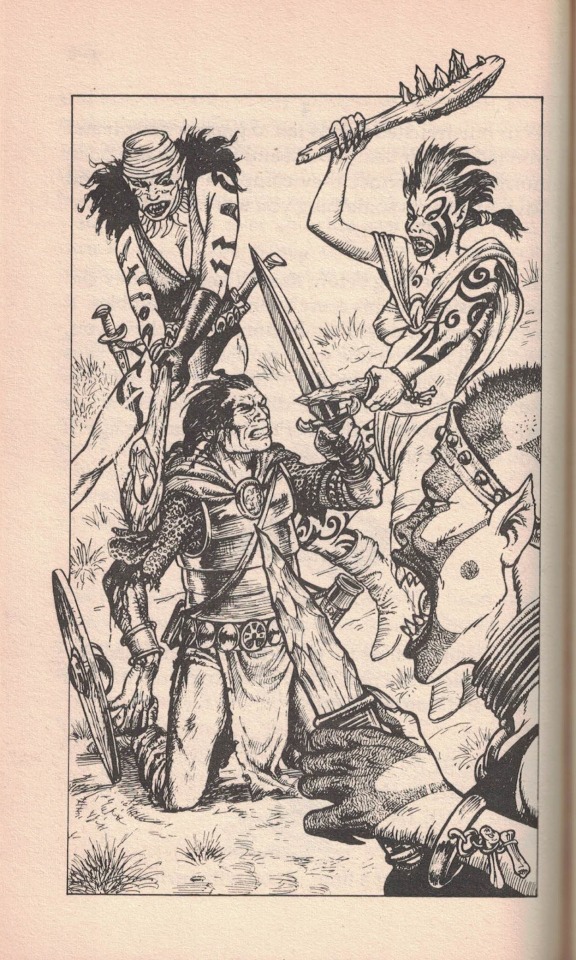




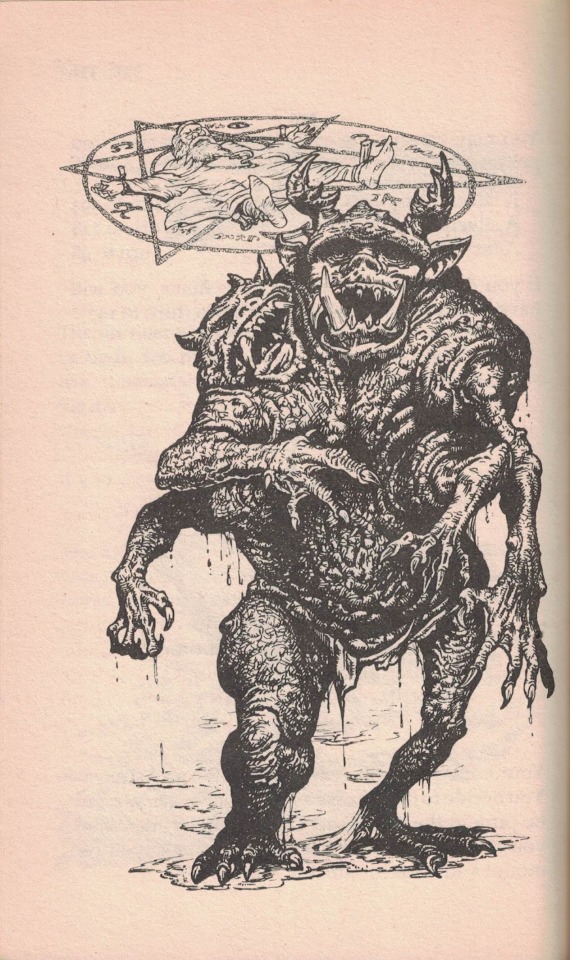
Fighting Fantasy #26: Ian Livingstone’s Crypt of the Sorcerer. This one’s notoriously difficult, not because of any complex puzzles like you find in a Steven Jackson book, but because of the sheer number of items and bits of information you need to accumulate. Seriously: in order to reach the Big Bad Razaak, you have to first beat a skeleton in an Allansian trivia contest.
Still, a fun adventure, because you at least get a couple of non-useless companions with whom you can enjoy a pleasant balloon ride (dragon attacks notwithstanding).
The interior art by John Sibbick does a good job of presenting Livingstone’s monstrous bestiary, and I prefer his version of Razaak to Les Edwards’ still-fine cover illustration. The picture of the wild elf women attack some hapless adventurer kinda pushes to envelope of titillation and violence for a kids’ book.
#fighting fantasy#fantasy art#crypt of the sorcerer#ian livingstone#john sibbick#les edwards#elf women#cave troll#dragon#balloon#sorceror#razaak#wood demon#demon spawn
46 notes
·
View notes
Text

Prehistoric life : the rise of the vertebrates, David Norman, 1994. Illustrated by John Sibbick.
265 notes
·
View notes
